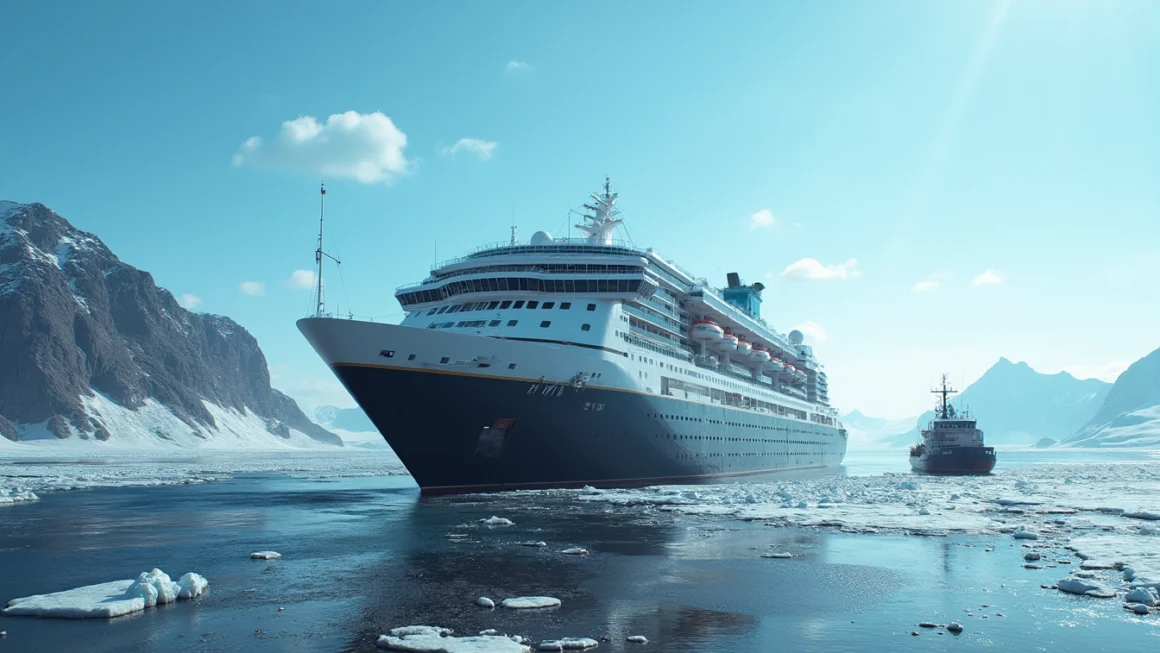The recent incident involving a cruise ship running aground off the coast of Greenland has sparked concerns about the safety and environmental impact of Arctic tourism. With over 200 passengers and crew stranded for three days, this event highlights the unique challenges faced by vessels navigating the remote and icy waters of the Arctic region.
The Incident: A Closer Look
Table of Contents
The Ocean Explorer, a luxury cruise ship, found itself stuck in mud and silt in a remote area of Greenland’s Alpefjord National Park. This mishap occurred during what was meant to be a 19-day expedition exploring the world’s largest island. The situation was further complicated by the ship’s location, approximately 1,400km (870 miles) northeast of Greenland’s capital, Nuuk.
Rescue Efforts and Challenges
Rescue operations faced significant hurdles due to the remote location. The nearest vessel capable of assisting was three days away, underscoring the vast distances and limited resources in the Arctic. Eventually, a fishing research vessel managed to free the Ocean Explorer by using a high tide to its advantage.
Rising Concerns Over Arctic Tourism
This incident has brought to the forefront growing concerns about the increasing popularity of Arctic tourism. As climate change makes these regions more accessible, there’s a surge in interest from tourists seeking unique experiences in these pristine environments.
Environmental Impact
The fragile Arctic ecosystem is particularly vulnerable to human activity. Increased ship traffic poses risks such as oil spills, pollution, and disturbance to wildlife. There are also concerns about the carbon footprint of these expeditions, contributing to the very climate change that is altering the Arctic landscape.
Safety Considerations
The Ocean Explorer incident highlights the potential dangers faced by ships in Arctic waters. Unpredictable weather, icebergs, and limited rescue capabilities pose significant risks to both passengers and crew. As tourism increases, there’s a growing need for enhanced safety measures and emergency response capabilities in these remote areas.
Balancing Tourism and Conservation
The incident raises important questions about how to balance the economic benefits of tourism with the need to protect these sensitive environments. While tourism can bring awareness to environmental issues and support local economies, it must be managed sustainably.
Regulatory Challenges
Regulating tourism in international waters and across multiple jurisdictions presents complex challenges. There are calls for stricter guidelines and more comprehensive safety protocols for ships operating in Arctic regions. Automated monitoring systems could play a crucial role in enhancing safety and environmental protection in these remote areas.
The Future of Arctic Tourism
As the Arctic continues to change due to global warming, the tourism industry in this region is likely to grow. This presents both opportunities and challenges for local communities, governments, and environmental organizations.
Sustainable Practices
There’s an increasing focus on developing sustainable tourism practices that minimize environmental impact while still allowing people to experience these unique landscapes. This includes using more eco-friendly vessels, limiting visitor numbers, and educating tourists about the fragile nature of Arctic ecosystems.
Indigenous Perspectives
It’s crucial to consider the perspectives and rights of indigenous communities in Arctic regions. Tourism development should involve local communities and respect traditional land use and cultural practices.
Lessons Learned and Moving Forward
The Ocean Explorer incident serves as a wake-up call for the cruise industry and regulators. It highlights the need for:
- Improved emergency response capabilities in remote Arctic regions
- More stringent safety regulations for ships operating in these waters
- Enhanced environmental protection measures
- Better training for crew members on Arctic-specific challenges
- Increased collaboration between countries bordering the Arctic
Conclusion
The grounding of the Ocean Explorer in Greenland is more than just an isolated incident; it’s a stark reminder of the complexities and risks associated with Arctic tourism. As we move forward, it’s essential to strike a balance between satisfying the growing demand for Arctic experiences and protecting this unique and fragile environment. The incident should serve as a catalyst for improved safety measures, more sustainable practices, and a deeper consideration of the long-term impacts of tourism in one of the world’s last great wildernesses.
As Arctic tourism continues to evolve, it will be crucial for all stakeholders – from cruise operators to governments and environmental groups – to work together to ensure that these pristine regions can be enjoyed responsibly by future generations. Only through careful planning, stringent regulations, and a commitment to sustainability can we hope to preserve the beauty and ecological integrity of the Arctic while still allowing people to experience its wonders.




